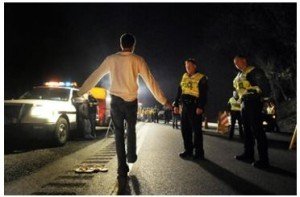
If you have a past juvenile adjudication for felony vehicular manslaughter, a later DUI could land you in prison.This was the holding in People v. Barclay, in which a California appeals court upheld a felony DUI sentence for Donavon Hicks Barclay III. Barclay was convicted of violating:
• Penal Code 23152(a), California’s driving under the influence law, and
• Penal Code 23152(b), driving with a BAC .08 or greater.
Under Vehicle Code 23550.5, a DUI conviction can be elevated from a misdemeanor to a felony if within the past 10 years you have violated any of three specified laws. One of these is “a prior violation [for vehicular manslaughter] that was punished as a felony.”
When Barclay was 17, he was charged with vehicular manslaughter under California Penal Code 192 (c)(1). That law criminalizes homicide committed while:
1. driving a vehicle in the commission of an unlawful act, not amounting to felony, and with gross negligence, or
2. driving a vehicle in the commission of a lawful act which might produce death, in an unlawful manner, and with gross negligence.
Violation of Penal Code 192(c)(1) is a so-called ”wobbler” offense. It is punishable by either:
1. up to one year in county jail, or
2. two, four, or six years in the state prison.
California Welfare and Institutions Code 702 specifically requires the juvenile court to declare a minor’s wobbler offense a misdemeanor or a felony. Therefore, the appeals court said, a minor’s violation of Penal Code 192(c)(1) may properly be deemed a felony violation.
This is despite the fact that a juvenile adjudication is not considered a conviction under California law. But the court drew a distinction between a conviction and a violation.
Under Welfare and Institutions Code 602, a minor’s criminal activity is deemed a violation of the law. This code section already existed when the Legislature enacted Vehicle Code 23550.5. Therefore, the court said, “we must presume that the Legislature was aware of the distinction between the terms ‘violation’ and ‘conviction.’”
Viewed in context, the justices concluded, the language of Vehicle Code 23550.5(a)(3) is clear. It authorizes the elevation of a section 23152 conviction to a felony when, as here, within the 10 years preceding the violation, the defendant has had a juvenile adjudication for felony vehicular manslaughter.
The case is People v. Barclay, No. H038109. (For information on how youthful indiscretion can actually serve as a defense, see our article on the Affluenza defense in California.)

